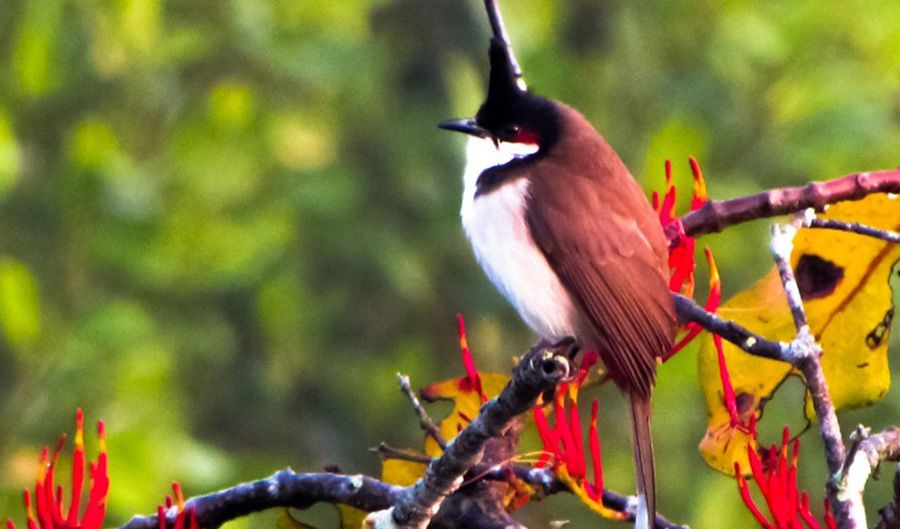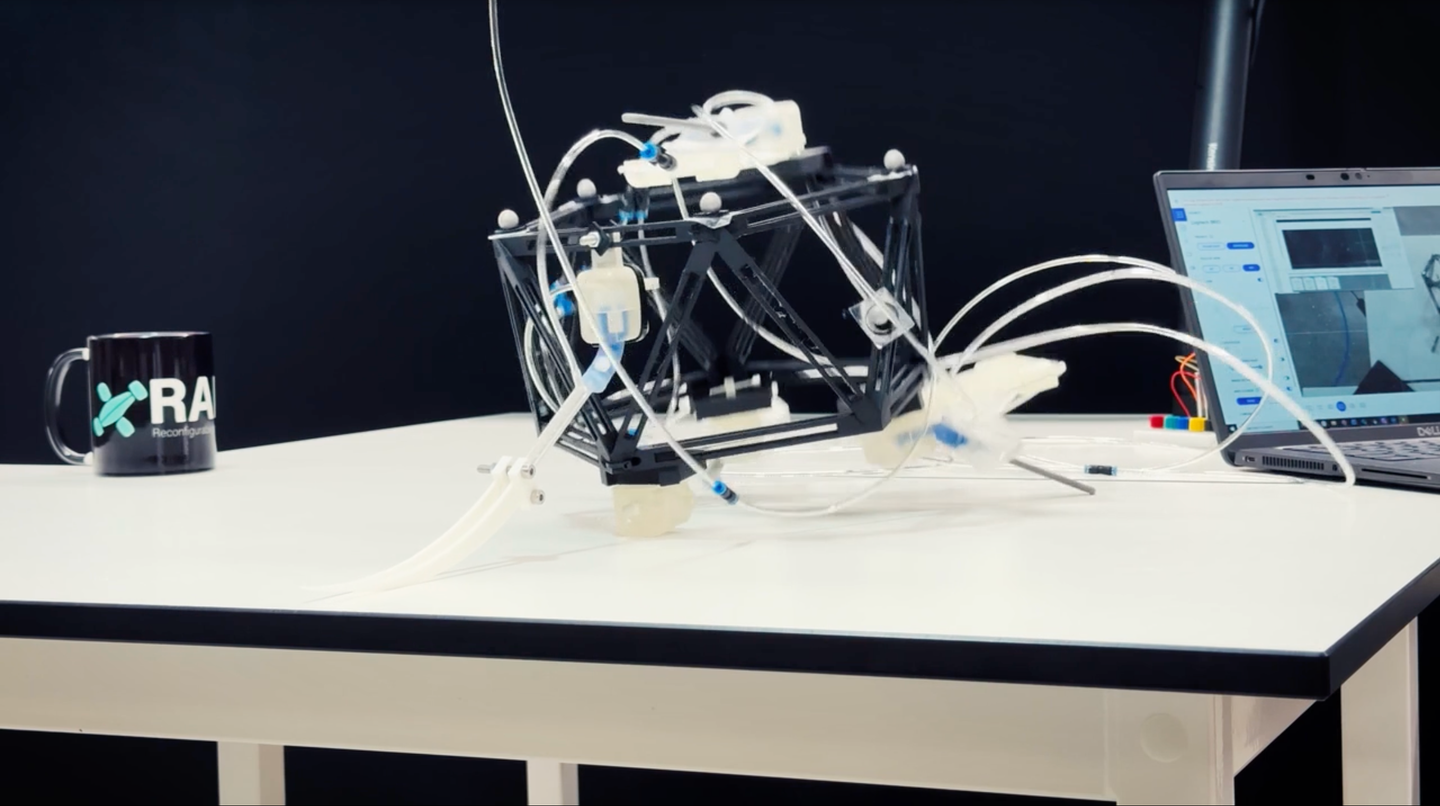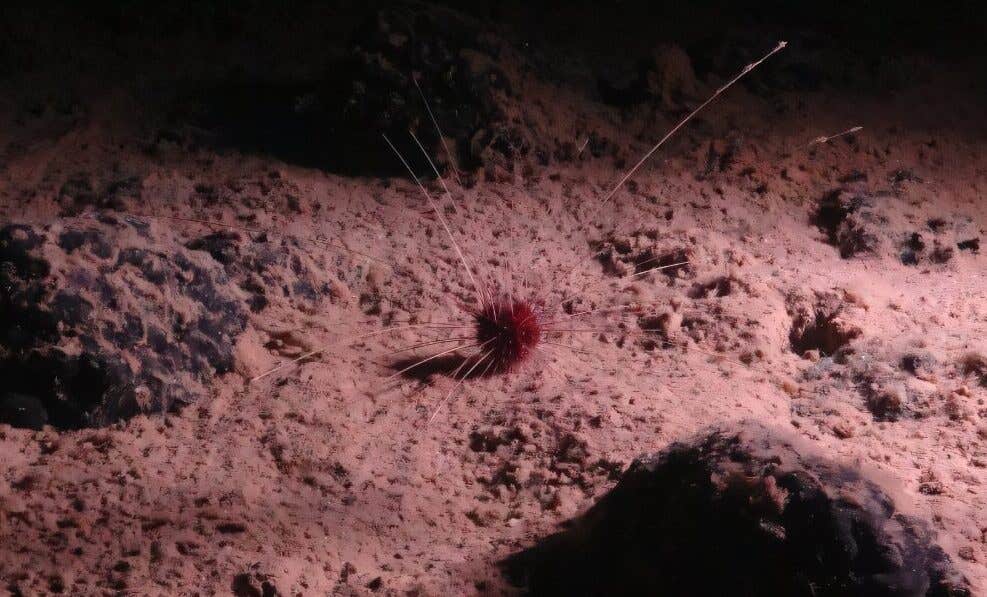Social media helping to protect biodiversity, study finds
Harnessing the Power of Social Media: How Nature Photographers are Revolutionizing Biodiversity Conservation Mapping in South Asia

[Nov. 19, 2023: JD Shavit, The Brighter Side of News]
Red Whiskered Bulbul (Pycnonotus jocosus), a passerine bird native to Asia. (CREDIT: Dr Shawan Chowdhury)
In the age of digital connectivity, social media platforms have evolved into more than just platforms for sharing personal anecdotes and vacation photos. They have become powerful tools for scientific research and conservation efforts, as demonstrated by a groundbreaking study led by Dr. Shawan Chowdhury from the University of Queensland's School of the Environment.
This international research endeavor has tapped into the wealth of nature photographs shared on Facebook in South Asia to significantly enhance biodiversity conservation mapping, potentially paving the way for a global revolution in this field.
Dr. Chowdhury's research focused on Bangladesh, a country known for its remarkable natural diversity. Despite its rich wildlife heritage, only a mere 4.6 percent of its land is officially designated as protected. To address this conservation challenge, the team embarked on a unique journey through the world of social media. They scoured Facebook nature photography groups operating in Bangladesh, meticulously analyzing images shared by nature enthusiasts. The results were nothing short of astonishing.
"We found 44,000 photos of almost 1,000 animal species, including many birds and insects, 288 of which are considered threatened in Bangladesh," Dr. Chowdhury reported. The sheer scale of this data collection effort is a testament to the untapped potential of social media in biodiversity research.
Related Stories:
Perhaps even more remarkable than the quantity of data was its quality. The photographs shared by nature photographers on Facebook offered invaluable insights into the distribution and behavior of various species, painting a vivid picture of Bangladesh's wildlife landscape. Dr. Chowdhury noted, "We identified many more high-priority areas for conservation, spanning 4,000 square kilometers for birds and 10,000 square kilometers for butterflies."
The implications of this research are profound. Dr. Chowdhury highlighted the significance of the findings by stating, "We'd been missing out on the distribution data of hundreds of endangered species in Bangladesh, so this is a big result." These discoveries could revolutionize conservation efforts in regions facing challenges related to structured monitoring and data collection.
One of the key takeaways from this research is the potential for social media to bridge critical information gaps in biodiversity conservation. Dr. Chowdhury commented, "This could change the way scientists gather biodiversity information in the future, especially in regions where there is a lack of reliable and up-to-date structured monitoring to inform conservation efforts." Social media platforms like Facebook can serve as powerful tools for citizen science, enabling ordinary individuals to contribute meaningfully to scientific endeavors.
Red-base Jezebel (Delias pasithoe). (CREDIT: Dr Shawan Chowdhury)
Interestingly, the impact of social media on biodiversity research extends beyond South Asia. In Australia, social media has also played a crucial role in tracking the movement of pest species. Dr. Chowdhury explained, "A South Asian butterfly, called the tawny coster, entered Australia in 2012." To understand the butterfly's colonization patterns, the research team turned to Facebook for additional locality records. The results were both illuminating and revealing.
"We've searched for additional locality records from Facebook to analyze the movement, ecology, and colonization status of this species and shown that it expanded at about 135 kilometers per year in Australia between 2012 and 2020," Dr. Chowdhury revealed. This demonstrates the potential of social media to not only contribute to conservation efforts but also to track the spread of invasive species and their impact on local ecosystems.
Spotted deer or chital (Axis axis) numbers are declining in regions without protected areas. (CREDIT: Dr Shawan Chowdhury)
However, while social media has proven to be a valuable resource for biodiversity research, there are challenges that need to be addressed. Co-author Professor Richard Fuller from the University of Queensland pointed out, "There is currently no automated way to collect this information, and it was a very arduous task for us to do it manually." The labor-intensive process of manually collecting and analyzing data from social media platforms underscores the need for technological solutions.
Professor Fuller emphasized the need for innovation in this regard, saying, "We hope our research can inspire the development of technology such as an app that transfers biodiversity data posted on Facebook directly to the global biodiversity databases." Such a technological advancement could revolutionize the way biodiversity data is collected and shared, making it more accessible to conservation scientists worldwide.
Dr. Shawan Chowdhury (CREDIT: Dr Shawan Chowdhury)
The impact of this research extends beyond the academic realm. It has the potential to catalyze a broader shift in the way society views social media. These platforms, often criticized for their role in spreading misinformation and fostering addiction, can also serve as invaluable tools for science and conservation. Dr. Chowdhury's work exemplifies the transformational potential of social media in the hands of dedicated researchers.
The results of this pioneering study have been published in prestigious scientific journals, including Bioscience, One Earth, and Conservation Biology. This recognition underscores the significance of the research findings and their potential to reshape the future of biodiversity conservation.
A Pale Triangle (Graphium eurypylus) on the left with a Blue Triangle (Graphium sarpedon) on the right. (CREDIT: Dr Shawan Chowdhury)
Dr. Chowdhury's contributions to biodiversity research are not limited to his work at the University of Queensland. He is also associated with esteemed institutions such as the German Centre for Integrative Biodiversity Research (iDiv) Halle-Jena-Leipzig, the Helmholtz Centre for Environmental Research, and the Friedrich Schiller University Jena. His multidisciplinary approach and international collaborations exemplify the global nature of modern scientific research and the potential for cross-border partnerships to drive meaningful change.
By harnessing the power of nature photographers and citizen scientists on Facebook, this research has illuminated previously hidden facets of biodiversity and conservation priorities. The potential for social media to revolutionize data collection and information sharing in the field of biodiversity conservation is immense, and it is a testament to the remarkable opportunities that technology offers to science and conservation efforts worldwide.
As we look to the future, it is clear that the impact of Dr. Chowdhury's work will extend far beyond the boundaries of Bangladesh, inspiring innovative solutions and collaborations that hold the promise of a more sustainable and biodiverse planet for generations to come.
For more science and technology stories check out our New Discoveries section at The Brighter Side of News.
Note: Materials provided above by The Brighter Side of News. Content may be edited for style and length.
Like these kind of feel good stories? Get the Brighter Side of News' newsletter.



